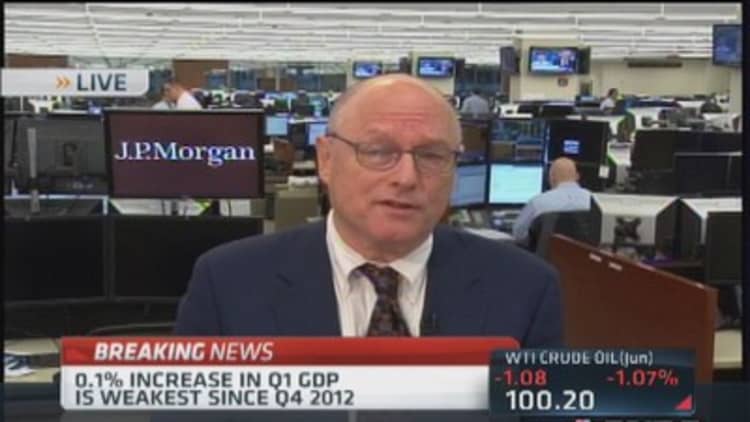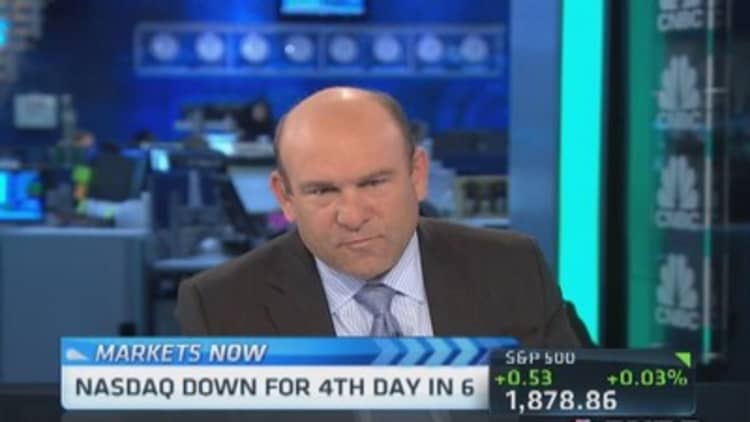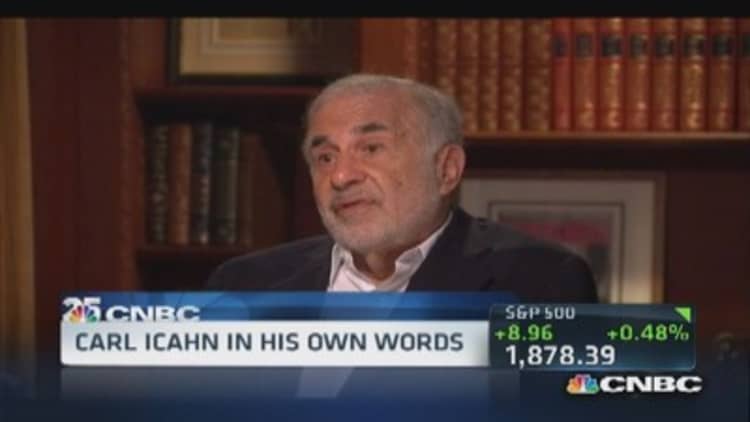
The U.S. economy barely grew in the first quarter as exports tumbled and businesses accumulated stocks at the slowest pace in nearly a year, but activity already appears to be bouncing back.
Gross domestic product expanded at a 0.1 percent annual rate, the slowest since the fourth quarter of 2012, the Commerce Department said on Wednesday. That was a sharp pullback from the fourth quarter's 2.6 percent pace.
Economists polled by Reuters had expected growth to slow to a 1.2 percent rate. The slowdown partly reflected an unusually cold and disruptive winter, marked by declines in sectors ranging from business spending to home building.
Read MoreUS private job creation booms in April: ADP
The Commerce Department's first snapshot of first-quarter growth was released just hours before the Federal Reserve wraps up a two-day policy meeting.
While harsh weather could partially explain the weakness in growth, the magnitude of the slowdown could complicate the U.S. central bank's message as it is set to announce a further reduction in the amount of money it is pumping into the economy through monthly bond purchases.
The first-quarter slowdown, however, is likely to be temporary and recent data have suggested strength at the tail end of the quarter.
Economists estimate severe weather could have chopped off as much as 1.4 percentage points from GDP growth. The government, however, gave no details on the impact of the weather.
Inventory growth decelerates
After aggressively restocking in the second half of 2013, businesses accumulated $87.4 billion worth of inventory in the first quarter, the smallest amount since the second quarter of 2013.
That was a moderation from the $111.7 billion amassed in the fourth quarter that has resulted in manufacturers receiving fewer orders. Inventories subtracted 0.57 percentage point from GDP growth in the first quarter.
Trade also undercut growth, taking off 0.83 percentage point, partly because of the weather, which left goods piling up at ports. Exports fell at a 7.6 percent rate in the first quarter after growing at a 9.5 percent pace in the final three months of 2013.
Together, inventories and trade sliced off 1.4 percentage point from GDP growth.
Consumer spending, which accounts for more than two-thirds of U.S. economic activity, increased at a 3.0 percent rate, reflecting a spurt in spending on services linked to the Affordable Healthcare Act.
Read More Why the slowdown in US economy may be temporary
Spending on goods, however, slowed sharply, indicating that frigid temperatures during the winter had reduced foot traffic to shopping malls. Consumer spending had increased at a brisk 3.3 percent pace in the fourth-quarter.
Harsh weather also undercut business spending on equipment. While investment in nonresidential structures, such as gas drilling, rebounded, the increase was minor.
Investment in home building contracted for a second straight quarter, in part because of the weather. But a rise in mortgage rates over the past year has also hurt.

A second quarter of contraction in spending on home building suggests a housing recession, which could raise some eyebrows at the U.S. central bank. A bounce back is, however, expected in the April-June period.
US labor costs rise marginally
U.S. labor costs increased at their slowest pace in more than two years in the first quarter, suggesting that slack in the jobs market continues to keep wage inflation subdued.
Read More China to overtake US economy; India trumps Japan
The Employment Cost Index, the broadest measure of labor costs, rose 0.3 percent after gaining 0.5 percent in the fourth quarter, the Labor Department said on Wednesday. That was the smallest gain since the third quarter of 2011.
Economists polled by Reuters had forecast labor costs increasing 0.5 percent in the first quarter.
In the 12 months through March, costs rose 1.8 percent, the smallest since the second quarter of 2012. They had advanced 2.0 percent in the 12 months through December.

Though the index continues to show little sign of wage inflation it could garner more attention in the quarters ahead as pockets of upward wage pressure start to emerge in areas where employers cannot find qualified workers to fill positions.
The lack of wage inflation is keeping overall price pressures in the economy benign, giving the Federal Reserve latitude to keep benchmark interest rates near zero for a while.
Read MoreFed taper to cause 'severe recession': Economist
Wages and salaries, which account for 70 percent of employment costs, also increased 0.3 percent in the first quarter. That followed a 0.5 percent rise in the fourth quarter.
Wages and salaries were up 1.6 percent in the 12 months through March. Benefit costs rose 0.4 percent in the January-March period after rising 0.6 percent in the prior quarter.
In the 12 months through March, benefit costs increased 2.1 percent.
Click here for the market reaction.
—By Reuters

